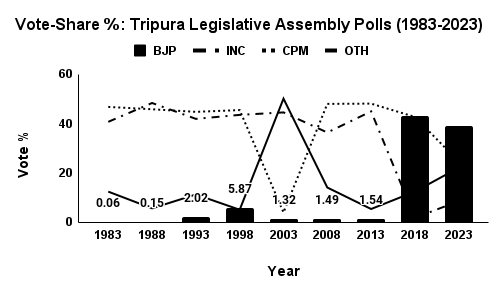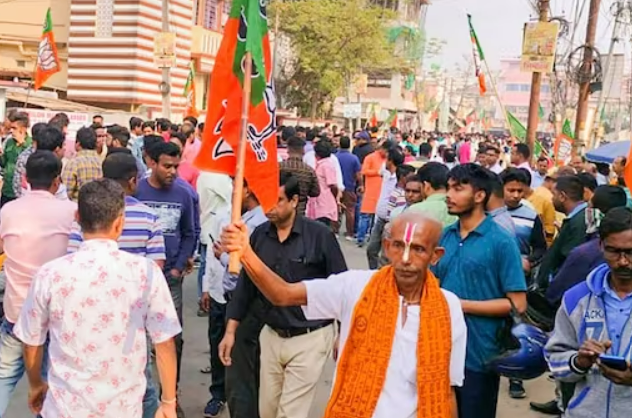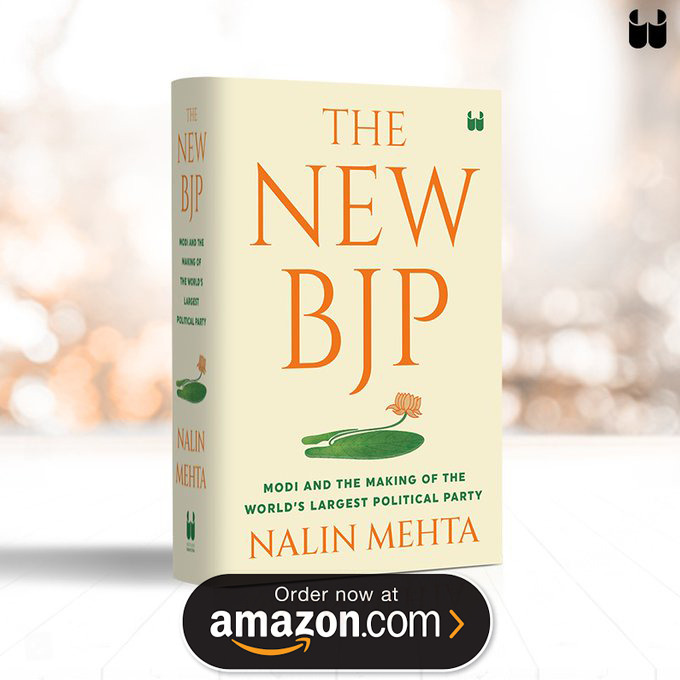Aday after campaigning ended for the Nagaland and Meghalaya elections last month, Prime Minister Narendra Modi tellingly presented a Meghalaya stole and a Nagaland shawl to visiting German chancellor Olaf Sholtz. It was typical political symbolism by a leader whose ascent as prime minister in 2014 presaged a tectonic shift in political power equations in India’s northeast states. Outside of the local political dynamics of Agartala, Kohima, and Shillong, the results of the latest assembly elections indicate that the processes that drove this wider reframing of the regional political chessboard over the last eight years by Modi’s new BJP have deepened and taken greater root.
This has significant implications for national politics on the road to 2024. Here are 5 key takeaways from these elections:
1. HISTORICAL POLITICAL SHIFT IN NORTHEAST
In Tripura, the BJP had never won an assembly seat till 2018. For example, it won 0 seats in 2013 with 1.5% votes. However, in 2018, the party stormed to power in Agartala, ending over two decades of Left rule. The BJP’s 2018 breakthrough could have been seen then as a one-off.
Five years later, it has retained the state after trouncing a once-unthinkable Left and Congress alliance. The BJP did this, after changing chief ministers mid-stream, like it did earlier in Uttarakhand and Gujarat.
Crucially, Tripura is a state with a sizeable tribal population, where the rise of the Tipra Motha led by former royal family scion Pradyot Manikya Deb Burman indicates new rumblings at the ground level.
Despite this, the fact that the BJP won 39% vote-share in a state where it was basically non-existent until 2018, is a good indicator of the deeper shift in the state’s polity (see Figure 1)
Figure 1: BJP’s Stunning Rise in Tripura Politics


In Nagaland, where BJP was a junior partner in the previous government, the party has replicated its previous seats tally and increased its own vote share to 18.9% in a clear majority for the NDPP-BJP alliance. In Meghalaya, where BJP was allied with Conrad Sangma’s ruling NPP until just before the elections, it has marginally increased its seat tally.
2. BJP PREDOMINANT NATIONAL PARTY IN NORTHEAST
Across Nagaland, Tripura, and Manipur, the BJP has won about 50 assembly seats. This is approximately 6 times that of the erstwhile dominant national party, the Congress, whose poll tally, at last count, stood at 8 seats.
These results underscore the continuing electoral retreat of the Congress from states it dominated for decades.
The BJP, using a differentiated political strategy that varied greatly from its imagery in north India and the Hindi heartland, has acquired a “permanent address” in the region. Consider this: until 2016, the BJP had never been elected to power in any of the region’s eight states. However, by 2023, it held office in six of eight northeastern states, four of them on its own steam, with BJP chief ministers leading multi-party coalitions: Tripura (2018 and 2023), Assam (2016 and 2021), Arunachal Pradesh (2016 and 2019), and Manipur (2017 and 2022).
Figure 2: BJP’s Coalitions in Northeast (2016-2023)

3. NOT JUST A “HINDI-HINDU” PARTY…..
Read full opinion on news18.com
This article was first published on news18.com | MARCH 02, 2023


